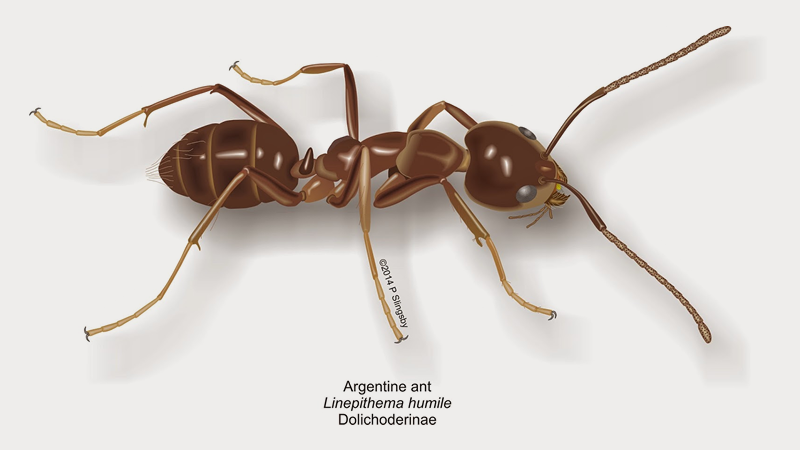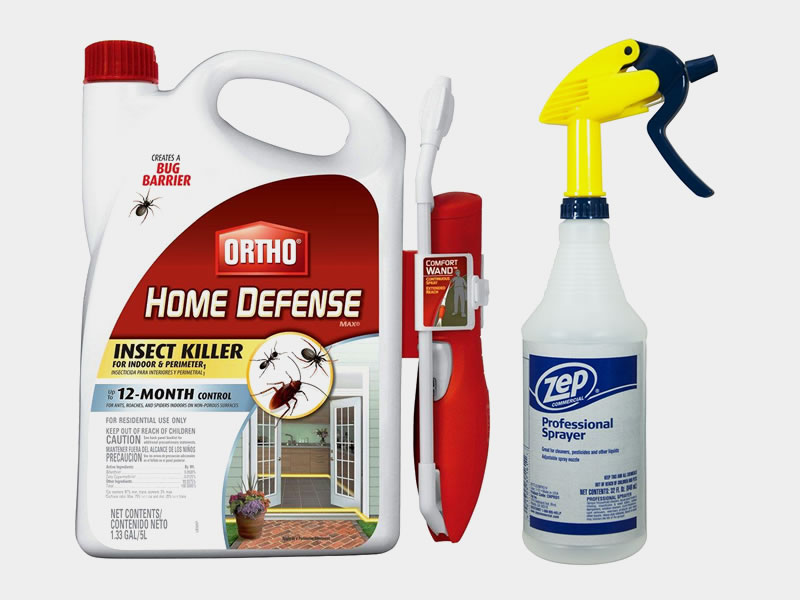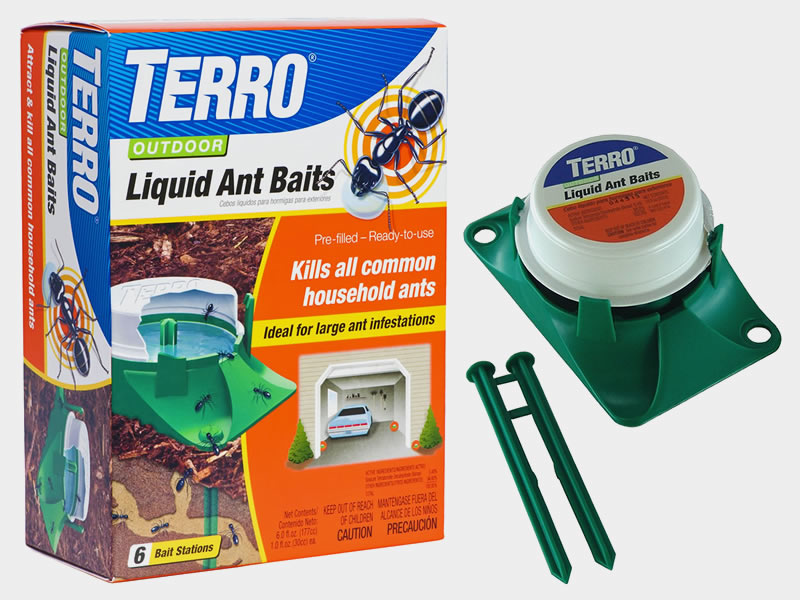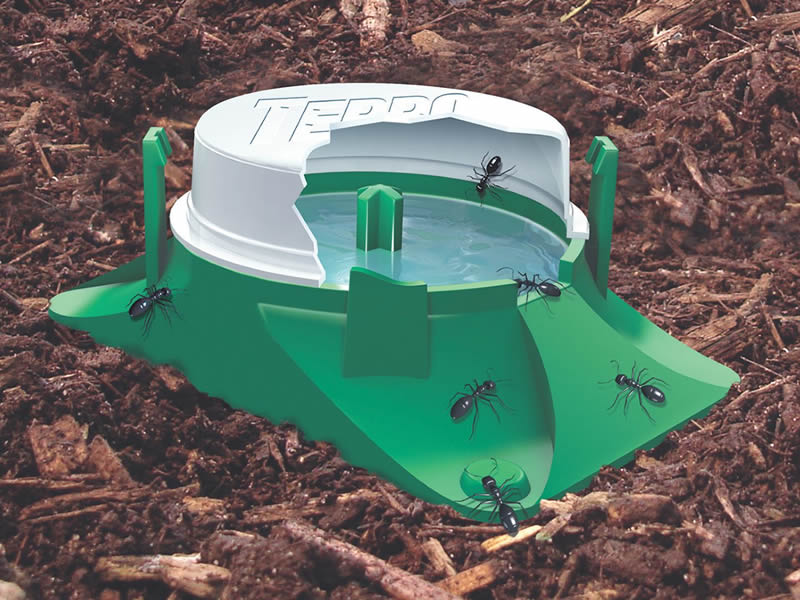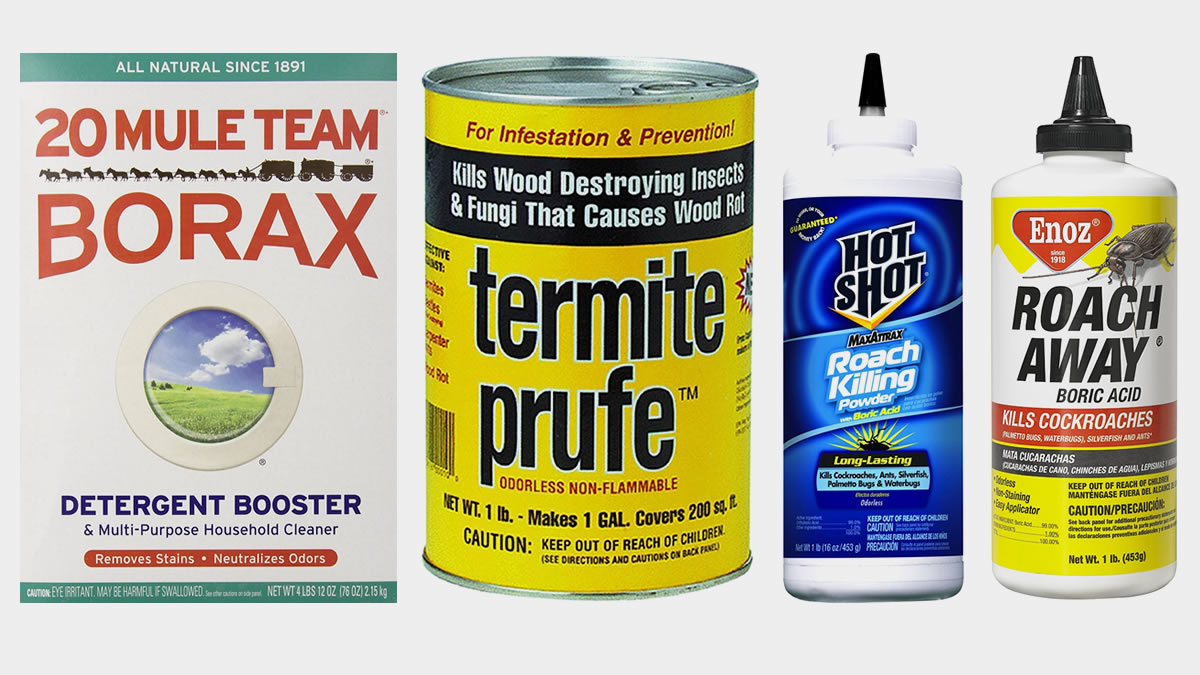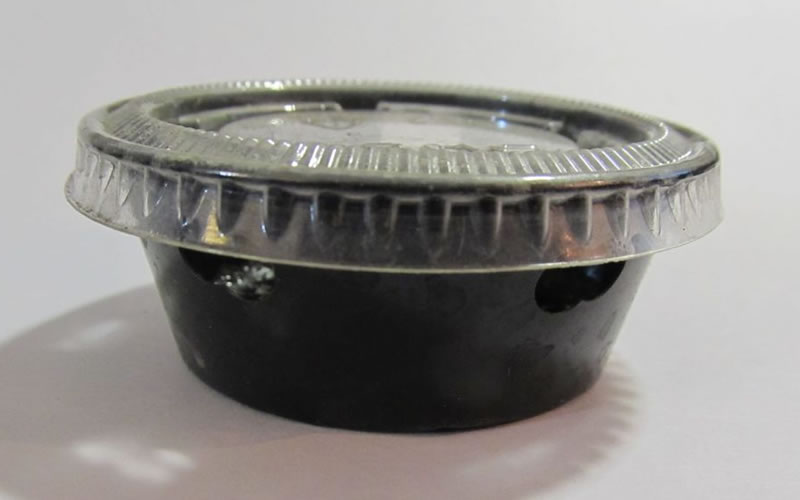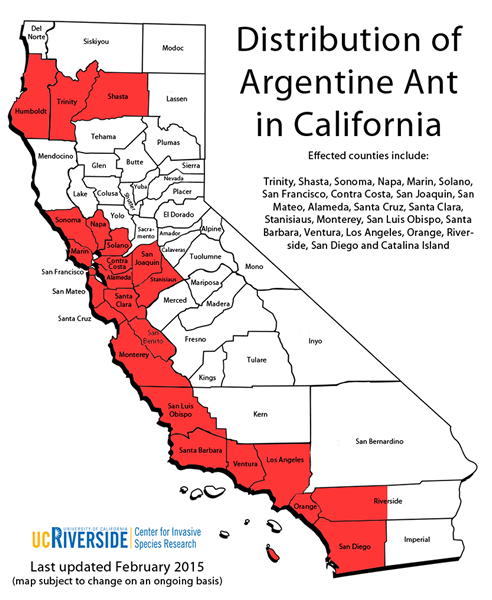Mobile Home Owner Tips
Ants – Take Charge and Keep Them Away
Here in California we have those little black ants. Actually they are brown if you look at them close with a magnifying glass – and they are go-getters. They call them Argentine Ants because that's where they came from and now they are all around the world. Argentine Ant colonies have multiple queens, so even if one queen dies, others take over.
Want them out of the house? Prepare yourself mentally. There is no quick fix that works permanently. There will always be ants somewhere itching to get into your food.
Put a little time into keeping them back and your problem is managed, but never solved. Keep them back by following a regular plan, especially in spring and summer when ants are multiplying.
Spraying
You need to keep kitchen counters and floors wiped clean and food inside bags or tightly sealed. Still, you may see lone ants hanging around the kitchen, scouting for some food to tell the others all about. Just spraying wherever you see ants is only temporary. They will form a path that goes around where you spray. And the hive is still alive and well. Much better to set up a barrier to keep them outside. That means spraying a complete circle around the outside of the house.
For best results, use a long-lasting spray. Some can last six months or longer if it isn't washed away by rain and water. When shopping for spray, look for words like "long-lasting" or "6 months". Usually it's in a liquid hand-spray container. You can buy spray bottles that are smaller and have finer nozzles and just refill them from the bigger containers.
It will take some time to spray the entire outside baseboards along the ground. You may need to do this twice a year or more if the ants keep getting past the poison barrier. Spray around the window sills and door sills too.
At some houses the ants are getting inside the walls, not just through the doors or windows. You may not know how they do it because you won't see them outside very much. If this drives you crazy, you may want to attack them outside where they live and then use bait to keep them back.
Total Warfare Against the Colony
If you find yourself fighting ants over and over again, you may decide to go after them in a way that lasts longer.
Quick Tips
- Try to find the ant hills on your lot and kill the colonies with spray directly into the holes.
- Once they are no longer living on your lot, then they will come over from the neighbors.
- Set up ant bait (the right kind) around the perimeter of your lot and check it at least once a week.
- You can save time and money mixing up your own ant bait.
- It takes about 30 minutes of your time a month to maintain your bait traps.
Sometimes, if you just walk around your lot with eyes peeled to the ground you can spot ant trails. Follow them back to the hive and look for multiple holes nearby. If you adjust your hand sprayer to a solid stream, you can spray directly into the holes. Be sure to get all the holes. Stay around for 10 minutes or so and look to see if any are getting away out of hidden holes you didn't notice.
If you water your lawns and gardens with a hose (not sprinkler system) then you are halfway to finding the ant hills on your lot. Soak the area with water for a few minutes and then watch to see if ants swarm out. That's where the hidden hole is located. Spray there. This causes serious loss to the colony. If you can find and eliminate all the colonies on your lot, you have done the hard part, but now you want to keep them from returning.
Keep Them Back with Bait Stations
Probably all your neighboring lots have ant colonies. Those ants are waiting to set up colonies on your lot. You can do a lot to keep them back by baiting them. What you are doing is baiting and killing the ants from other lots when they come onto your lot. Put out at least six bait stations. Put one on each corner of the lot and the other two along the long sides of the lot. That way you have the borders covered. Every ant you get this way is one more ant that won't be in your house. Better to feed them outside because that will keep them out of the house.
With Argentine Ants, you want sweet poison bait. And you don't really want to immediately kill the ants that eat it. You want them to take it back home and feed the queens and grubs. That way you kill the whole colony and don't have to deal with that colony again
One of the good baiting systems is the Terro® Liquid Ant Bait Stations.
Easy Way to Mix Your Own Bait
The liquid bait will dry out in warm weather and needs to be refilled. And dirt gets into it. If you are tired of buying fresh bait traps, you can save time and money by mixing your own liquid bait and storing it. Terro uses sugar water with boron dissolved in it and you can easily make some yourself. It is nearly harmless to pets and humans but deadly to insects. Just mix the powder that contains boron into some sugar water and the Argentine Ants will love it! Here's the recipe:
- 1 Cup of Water
- 10 Teaspoons of White Sugar
- 2 Teaspoons of Boron Powder
You may want to use warm water to help the bait dissolve. Stir the ingredients until the liquid is clear and store it away with your poisons. Any of these will work as the boron powder.
In the summer you may want to mix a double batch. In hot weather you may need to refill the trays 3 times a week. In colder weather once a week. You can rinse out the dirty trays and refill them with your mixture. If you are just starting, it may seem like a lot of fuss. Just remind yourself of the fuss you are going through when ants get into the kitchen. Better to take matters into your own hands than let the ants decide what happens next.
You can make your own bait stations using any small plastic container with a few holes punched into it. The bait stations can be reused if you rinse them out. This is an extra step, but is faster and simpler than buying new ones.
Patience and Persistence
The ants taking the bait will take several days to disappear. It's the slow way that works longer and gets rid of the colony. If you have the patience to let them eat the bait for a few days, you'll see that they eventually disappear. In a month or so, you'll notice fewer ants outside the house. Now you are in charge.
If ants are living in the walls and still in the kitchen, you can use the bait stations in the kitchen to slowly kill the colony. That's a better way because it is killing the ants in the hive, and maybe even the queens. It takes a lot of patience and tolerance because you are letting the ants come and go until enough of them have eaten the bait.
What works the most is your persistence in checking and refilling the bait stations. If you quit, the ants will come back! If you add up all the time you spend fighting ants, you may find that it is actually less time to just work this system and keep them back permanently.
More Information on Argentine Ants
- University of California, Riverside – Argentine Ant (Linepithema Humile)
Because it does not sting or bite humans the Argentine ant is not a direct threat to humans, unlike the red imported fire ant. Instead, the Argentine ant is most notable as a nuisance pest in urban areas, especially because of the availability of water. This ant exists in back yards at high densities associated with landscape features that provide favorable microclimates, such as potted plants and walkway bricks or stones.
- Wikipedia – Argentine Ant (formerly Iridomyrmex Humilis)
These ants will set up quarters in the ground, in cracks in concrete walls, in spaces between boards and timbers, even among belongings in human dwellings. In natural areas, they generally nest shallowly in loose leaf litter or beneath small stones, due to their poor ability to dig deeper nests. However, if a deeper nesting ant species abandons their nest, Argentine ant colonies will readily take over the space.

